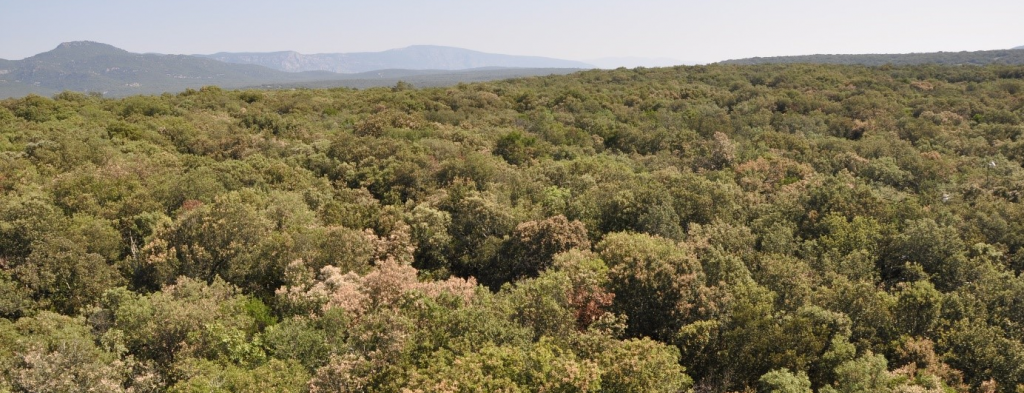
Puéchabon site (France)
The Puechabon experimental site is located in the Puechabon State Forest on a flat area 35 km North-West of Montpellier in the South of France. The area has a Mediterranean-type climate, rainfall occurs mainly during autumn and winter with about 75% between September and April. Vegetation is largely dominated by the overstorey tree Quercus ilex L. whose percent cover is greater than 80%. Understorey species compose a sparse shrubby layer with the main species being Buxus sempervirens L., Phillyrea latifolia L., Pistacia terebinthus L. and Juniperus oxycedrus L.. This forest grows on rocky soil from hard Jurassic limestone filled with clay. Because of the large fraction of rocks and stones in the soil profile available water cumulated over 4.5 m depth averages only 150 mm. As a consequence of this small soil water reserve, the vegetation undergoes very frequent drought stress during the summer.
Since 2000, Puéchabon is one of the referenced sites of the Carboeuroflux network, Carboeurope-IP, and the site is now part of the French network ORE FORET, of the European infrastructure ICOS and of the global network FLUXNET. These different programs and infrastructures aim at surveying continuously the fluxes of carbon and water exchange between the atmosphere and the terrestrial ecosystem. Data are available here.
